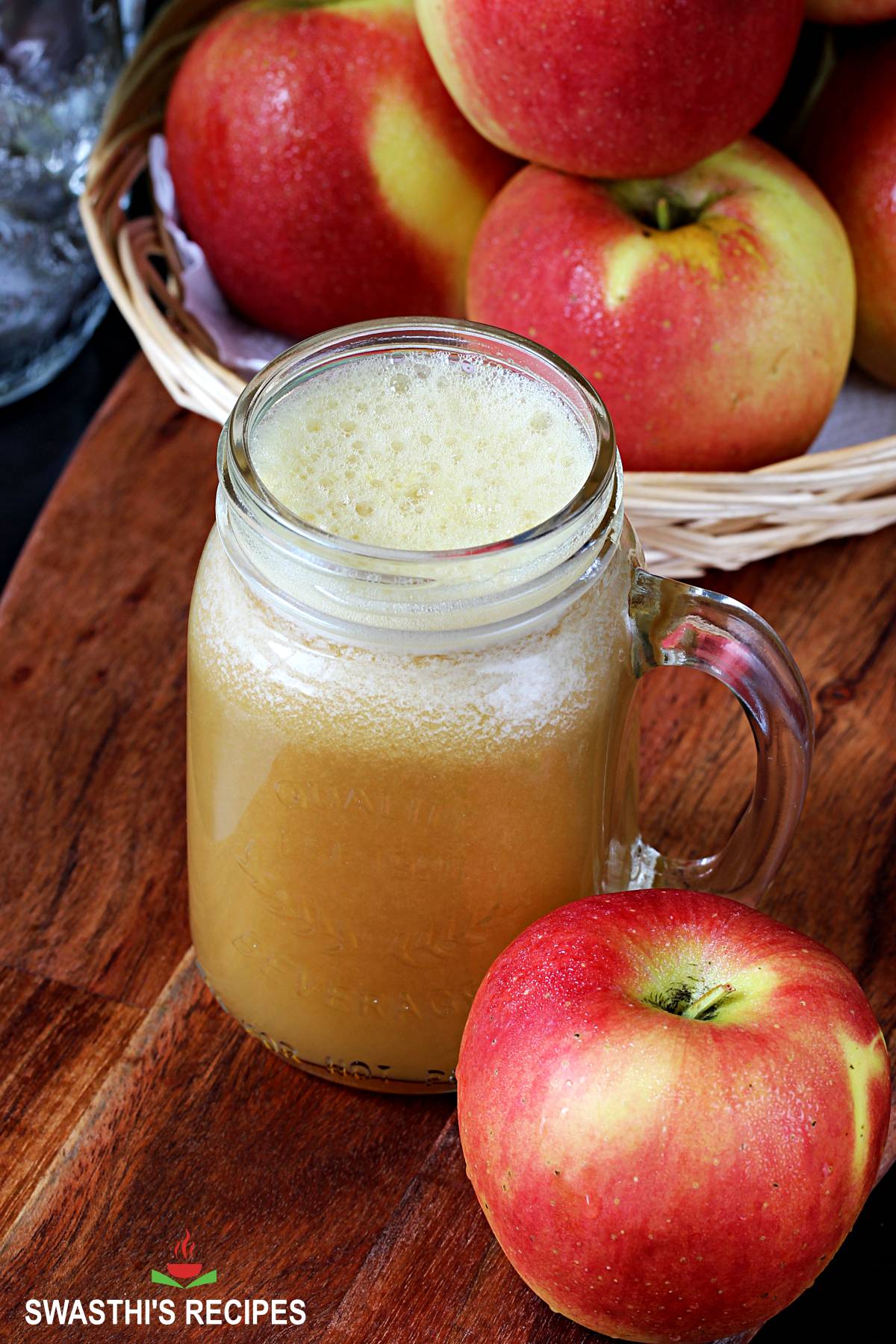Fresh Homemade Apple Juice: Benefits, Recipes, and Storage Tips for Optimal Flavor
Fresh homemade apple juice is rich in essential nutrients. Each glass contains vitamins A, C, and several B-complex vitamins like B1, B2, and B6. Additionally, it offers important minerals such as potassium, calcium, and magnesium. These nutrients contribute to the overall health of your body.
A typical 8-ounce serving of fresh apple juice contains:
- 116 calories
- 0.3 grams of protein
- 28 grams of carbohydrates
- 0.3 grams of fat
This juice also provides a significant amount of antioxidants, which help protect your cells from damage. Because it’s made from fresh apples, it retains more nutrients compared to commercially processed options.
Health Benefits
Drinking fresh homemade apple juice offers several health benefits. Regular consumption can improve heart health due to its high potassium content. This mineral helps regulate blood pressure and maintain cardiovascular functions.
You can also support your digestive health with apple juice. The high fiber content in apples aids digestion and promotes a healthy gut. Soluble fiber, like pectin, can help regulate bowel movements and prevent constipation.
Strong immune function is another benefit due to the vitamin C in apple juice. This vitamin boosts your immune system by promoting the production of white blood cells.
If you seek a natural way to detoxify your body, apple juice can help. The antioxidants in apples facilitate the removal of toxins, leading to a healthier liver function.
Conclusively, fresh homemade apple juice not only tastes delicious but also brings a host of health benefits, making it a valuable addition to your daily diet.
Selecting the Right Apples
Best Apple Varieties for Juicing
Selecting the right apple varieties enhances the taste and nutrient content of your juice. Granny Smith apples, with their tart flavor, and Honeycrisp apples, which are sweet, both work well. Fuji apples add a balanced sweetness, while Gala apples provide a milder flavor. Combining different varieties can create a more complex and satisfying juice.
When to Buy Organic
Buying organic apples reduces your exposure to pesticides. Organic apples are often fresher since they’re grown with fewer preservatives. According to the Environmental Working Group (EWG), apples frequently appear on the Dirty Dozen list of fruits with high pesticide residues, making organic options safer for juicing. If you can’t find organic apples, thoroughly wash and peel non-organic varieties to minimize pesticide exposure.
Preparation Techniques
Washing and Prepping Apples
Clean apples thoroughly before juicing to remove dirt and pesticide residues. Use a mixture of water and baking soda, scrubbing each apple gently. Rinse under running water to ensure all baking soda is removed. If you’re using non-organic apples, peel the skins to reduce pesticide exposure further. Cut each apple into quarters, removing the seeds and core, as they can affect the juice’s taste.
Juicing Methods
Different juicing methods suit various preferences and equipment. Use a centrifugal juicer if you prioritize speed and convenience. It processes the apples quickly, though it may introduce some oxidation, affecting juice quality. Opt for a masticating juicer to preserve more nutrients and enzymes. This method crushes the apples slowly, yielding a higher-quality juice with richer flavor. Alternatively, use a blender if you lack a juicer. Blend the apple pieces with a bit of water, then strain the mixture through a fine mesh sieve or cheesecloth to separate the juice from the pulp.
Homemade Juice vs. Store-Bought
Freshness and Flavor
Homemade apple juice offers superior freshness compared to store-bought varieties. Freshly juiced apples retain their natural flavor and nutrient profile since there are no delays in processing. You experience the robust, authentic taste of apples immediately after juicing. By contrast, store-bought juices often undergo pasteurization to extend shelf life, which can degrade flavor and nutrients. Homemade juice ensures you avoid such degradation, giving you fresh, vibrant apple goodness in every sip.
Additives and Preservatives
Store-bought apple juice frequently contains additives and preservatives. Manufacturers add these to enhance flavor, color, and shelf life. Common additives include high fructose corn syrup, artificial flavors, and colorings. Additionally, preservatives like sodium benzoate and potassium sorbate are used to prevent spoilage. Homemade apple juice avoids these substances, ensuring you ingest a purer, more natural beverage. By making juice at home, you control what goes into your drink, promoting a healthier lifestyle void of unnecessary chemicals.
Enjoying Your Juice
Creative Recipes to Try
Enhancing your fresh homemade apple juice with unique recipes can elevate its flavor profile. Consider mixing apple juice with other fruit juices or spices.
- Apple-Ginger Juice: Combine apple juice with freshly grated ginger. This adds a spicy kick and boasts anti-inflammatory properties.
- Apple-Cinnamon Delight: Infuse your apple juice with a cinnamon stick. Leave it to steep for a few hours. This warms the palate and enhances the juice’s sweetness.
- Green Apple Juice: Blend apple juice with spinach, celery, and a splash of lemon juice. This creates a nutrient-packed green drink that aids digestion.
- Apple-Carrot Juice: Mix apple juice with carrot juice. This combination provides a sweet yet slightly earthy flavor, rich in beta-carotene.
- Apple-Mint Fusion: Add fresh mint leaves to your apple juice. This refreshing mix is perfect for hot days and aids digestion.
Storage Tips
Proper storage maintains the taste and nutritional value of your homemade apple juice. Store it in airtight containers to prevent oxidation.
- Refrigeration: Keep your juice in the fridge for up to 72 hours. Beyond this, nutrient loss and flavor degradation may occur.
- Freezing: Freeze apple juice in ice cube trays or freezer-safe containers. This extends its shelf life for several weeks. Thaw as needed while maintaining freshness.
- Glass Containers: Use glass jars or bottles. They don’t retain odors or flavors from previous contents, ensuring a pure juice experience.
- Avoid Plastic: Opt for BPA-free containers if using plastic. Chemicals from non-BPA-free plastics can leach into your juice, affecting its safety and taste.
- Proper Sealing: Ensure lids are tightly sealed to avoid exposure to air. This helps prevent oxidation and preserves the juice’s quality.
By following these tips and recipes, you can ensure that every sip of your fresh homemade apple juice is delightful and beneficial.
Conclusion
Fresh homemade apple juice offers a delightful and nutritious alternative to store-bought options. By choosing organic apples and experimenting with creative recipes, you can enjoy a burst of natural flavors and health benefits. Proper storage techniques ensure that every glass retains its freshness and nutritional value. Embrace the joy of making your own apple juice and savor the unique taste and wellness it brings to your daily routine.






